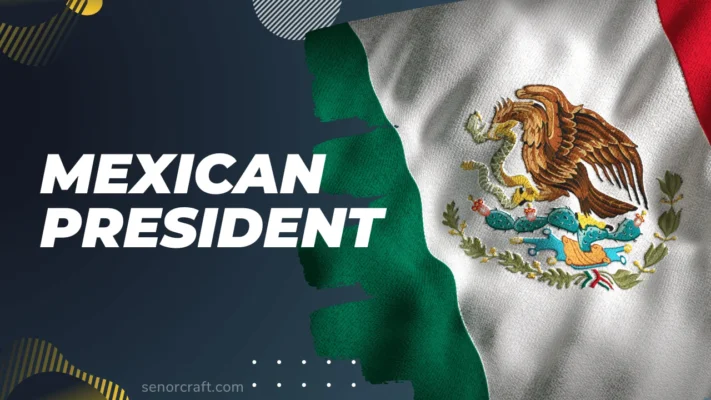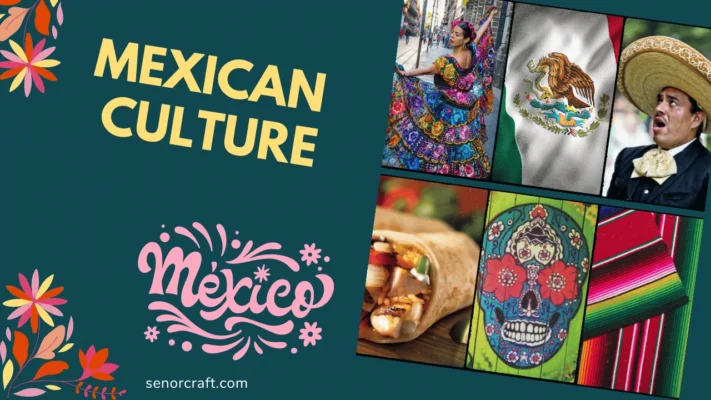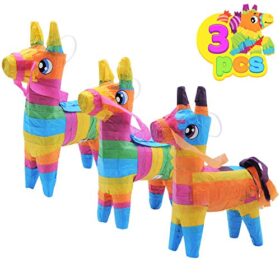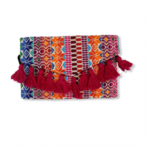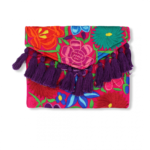No products in the cart.

Mexican flag is highlighted in the world
Mexican flag is highlighted in the world for its history and unique design
The Mexican flag is a symbol of pride for Mexican people. This solemn national flag has a beautiful tricolored design and an emblematic shield with a very interesting meaning. Learn about the history of the current flag, as well as those that existed before the official Mexican flag was instated.
The flag of Mexico is a symbol of union and sovereignty in the country, along with the Mexican national anthem.
Because of its unique design and colorful shield, it is considered the most beautiful flag in the world, according to a survey by the Spanish digital newspaper “20 Minutos.” In 2011, it broke the Guinness record for the tallest flagpole in America with a height of 393 feet (120 meters).
The Mexican flag and the Italian flag have some similarities as they share their three colors: green, white, and red. However, the flag of Mexico was originally designed with darker tones, a different size, and its splendid golden eagle in the center as an emblematic distinction.
The elements of the Mexican national flag are loaded with symbolism that make it unique.
The official symbolism for the colors of the flag are: hope embodied in green, unity in white, and the blood of national heroes in red.
This is why the Mexican flag holds a very special meaning for the Mexican people and is well-recognized throughout the world.
What is the history behind the tricolor Mexico flag?
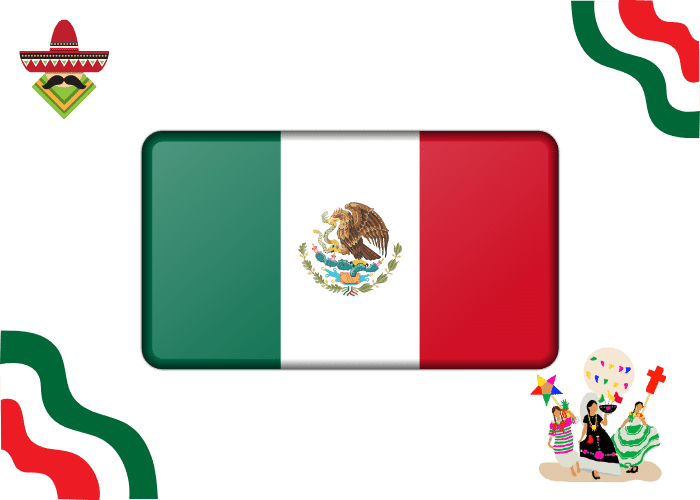
The Mexican flag has not always been its current version. Thoughout the years, it has endured some transformations. There have been several official flags before; each one representing and symbolizing the historical context or events of the time.
The first national flag had the image of the Virgin of Guadalupe displayed by priest Miguel Hidalgo at the emblematic Cry of Dolores, during the War of Independence that took place from 1810 to 1821. It meant a symbol to seek protection for the Mexican people, so that version of the flag was adopted after the country’s independence from Spain.
Later, during the government of President Agustín de Iturbide, a second national flag was adopted. This flag version was established in 1821. It included the figure of an eagle perched on a cactus as its main symbol. Three colors were also adopted in this design: green, white and red, in addition to the crown of the Empire.
In the Declaration of the Iguala Plan, Iturbide carried another version of the national flag with diagonal stripes.
At that time, the tricolor flag of the Army of the Three Guarantees held a very special meaning: white represented the Catholic religion, green symbolized the independence of Mexico from Spain, and red meant the equality and union of the Mexicans with the Spanish and the castes.
By the end of Iturbide’s term in 1823, the Constituent Congress officially established the National Flag, keeping the colors green, white and red, but with some changes. The imperial crown was removed from the eagle image and the republican symbols of laurel and oak branches were added.
After that, the Mexican flag was discontinued, to make way for the national flag of Emperor Maximilian I of Mexico. In this patriotic flag, there were four crowned eagles; each imagery was placed in each corner.
In 1968, during the mandate of President of Mexico Gustavo Díaz Ordaz, the national flag that we currently know was established by decree. In this Mexican national flag, the shield stands out with the eagle on both sides. This version is still in use today.
Importance of the National Shield in the flag of Mexico
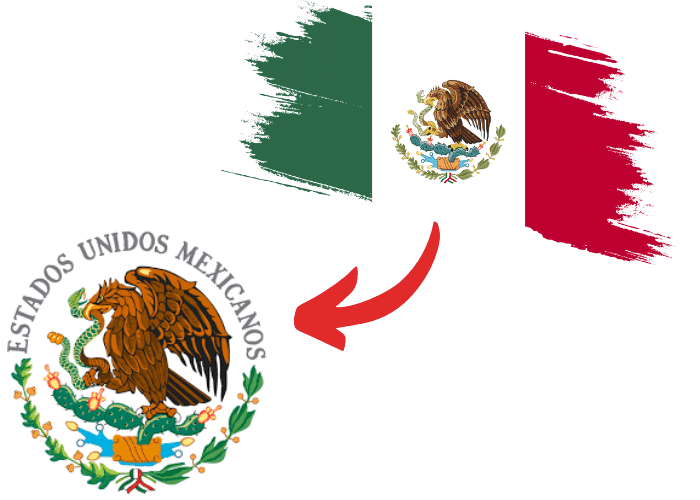
The Mexican flag shield has a rich history and special symbolism. Its elements refer all the way back to the legend of Huitzilopochtli:
During their migration from Aztlán, the Aztecs had to find an eagle on a cactus with a snake in its claws as the chosen site for building a new city that would be their home. This is how the city of Tenochtitlán was born, in the location of what now known as Mexico City.
The national shield has had some transformations, too. The eagle has been modified seven times until being established to what we know today as the golden eagle perched on a cactus while devouring a snake. The current design of the flag shield was designed by Francisco Eppens Helguera and Pedro Moctezuma Días Infante and presented to the government on February 24, 1969.
As a commemoration of the flag, there is a Mexican holiday called Day of the Flag. This important date was established since February 24, 1934 but was officially recognized until 1940 by decree of President Lázaro Cárdenas del Río.
Years later, on February 24, 1984, the new Law on the National Coat of Arms, Flag and Anthem came into force and mainly establishes in its third article that The National Flag consists of a rectangle divided into three vertical stripes of identical measurements, with the colors in the following order from the pole: green, white and red. In the white stripe and in the center, it has the National Shield, with a diameter of three quarters of the width of said stripe. The ratio between width and length of the flag is four to seven. You can wear a bow or tie of the same colors, at the foot of the moharra. A model of the National Flag, authenticated by the three powers of the Union, will remain deposited in the General Archive of the Nation and another in the National Museum of History.

The Mexican flag is the patriotic symbol that represents the spirit of unity, courage and patriotism of the Mexicans. It is never lacking in ceremonies that remember national heroes and indelible historical dates with great respect and pride.
Whoever has the privilege of being the bearer of the Mexican flag always shows it with great respect and when we see how the flag flies high, the feeling of Mexican pride is born.
Do you want to know more about mexico like culture, fiestas, food? Visit our blog, Or visit also our facebook page

